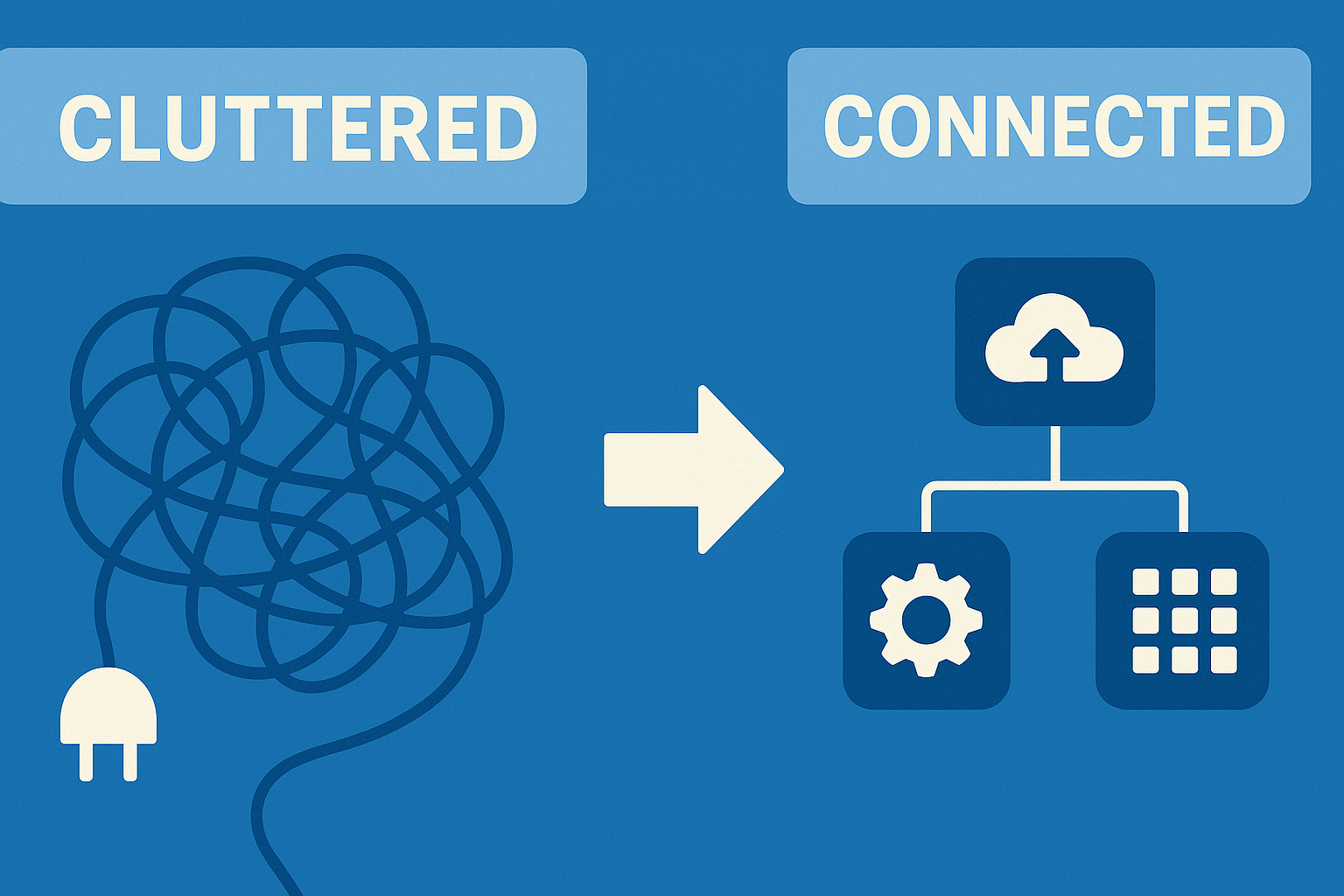You Don’t Need More Tools. You Need Better Architecture.
Introduction: Tools Are Meant to Help — Not Hinder
If you’re switching between ten different tabs just to get through a single task, you’re not alone. From Slack pings to Jira tickets, CI/CD pipelines to endless Zoom meetings — modern teams are buried in tools. While each platform promises efficiency, the lack of architectural integration often leads to the opposite: fragmented workflows, lost productivity, and developer burnout.
The problem isn’t the tools themselves. It’s how they work (or don’t work) together.
The Real Cost of Tool Overload
When tools operate in silos, teams suffer. Developers juggle multiple dashboards, duplicate information, and lose valuable time in context switching.
What this leads to:
- Constant notifications and distractions
- Time wasted navigating multiple systems
- Repetitive manual updates across tools
- Cognitive overload and frustration
Disconnected tools don’t just slow down work — they disconnect your team.
Architecture Is the Missing Link
Instead of adding more tools to fix the chaos, step back and re-evaluate the foundation. Smart architectural planning brings clarity, not complexity.
A well-designed architecture:
- Connects tools logically across your workflow
- Reduces manual intervention through automation
- Enables transparency across teams
- Improves scalability and performance
You don’t need to eliminate tools. You need to align them.
Cluttered vs. Connected: The Workflow Gap
Let’s break it down. A cluttered setup looks something like this:
- You’re logging into multiple platforms just to complete one task.
- You’re constantly switching tabs — Slack, Jira, Jenkins, Notion — and losing your flow.
- Tools don’t talk to each other, so you’re manually updating the same info in three different places.
- Your brain is fried from context switching, not actual problem-solving.
Now, contrast that with a connected architecture:
- One unified dashboard gives you visibility into your entire workflow.
- Tools are integrated — tickets automatically sync with code updates and deployments.
- Everything flows seamlessly, from development to monitoring.
- Developers stay in their zone — focused, fast, and productive.
The difference? One drains your energy. The other powers your momentum.

Benefits of a Unified Toolchain
Here’s what happens when your architecture supports your tooling:
Faster Deployment Cycles
CI/CD pipelines run smoother with integrated issue tracking and version control.Stronger Cross-Team Collaboration
Teams work from a shared source of truth, reducing communication gaps.Lower Operational Costs
Automation and streamlined workflows reduce time, errors, and resource waste.How to Get Started
1. Audit Your Current Tools
List what you use, who uses it, and where overlaps or inefficiencies exist.2. Map Your Ideal Workflow
Identify where each tool fits in your DevOps lifecycle or IT strategy.3. Integrate Smartly
Use APIs, middleware, or workflow orchestration platforms to connect tools.4. Optimize Continuously
Review performance regularly. Architecture is not a one-time setup.Conclusion: Architect for Efficiency, Not Exhaustion
The best DevOps and IT teams don’t use more tools — they use tools better. By focusing on architectural alignment, you empower your people, improve delivery speed, and create a sustainable foundation for growth.
Ready to simplify your stack and unify your workflow?
Let’s build the right architecture — together.
Let’s build the right architecture — together.